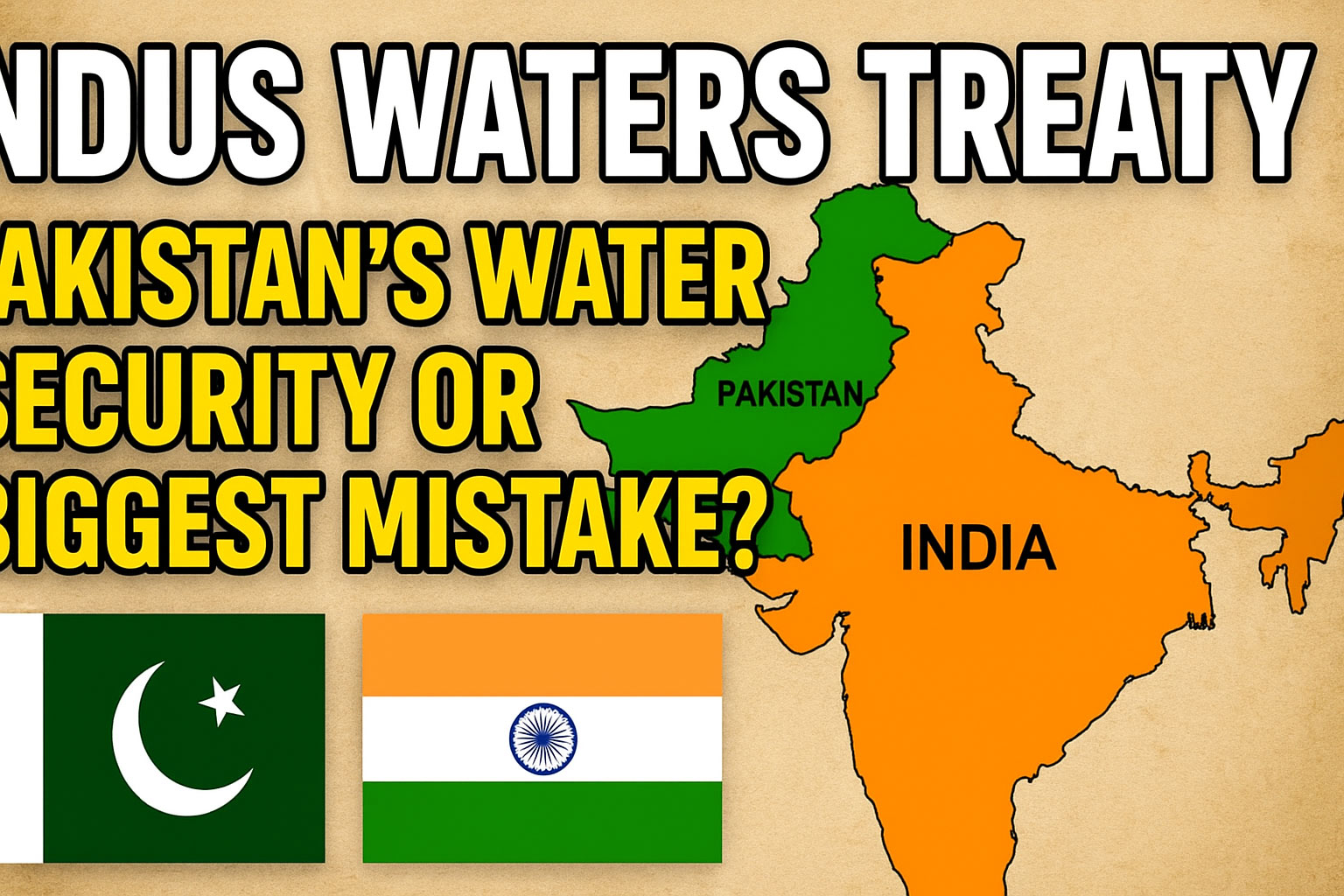In recent years, a popular narrative in Pakistan suggests that if the Indus Waters Treaty (Sindh Taas Agreement) had never been signed, Pakistan would have been in a far stronger position. Many critics argue—often without fully understanding the issue—that Pakistan “sold” its three rivers to India, resulting in a massive national loss. With Punjab once again facing devastating floods, public debate around the treaty has reignited. But are these allegations true? Was the Indus Waters Treaty really a mistake? Why was it signed in the first place? And did Pakistan actually gain more than it lost?
How Did the Pakistan-India Water Dispute Begin?
At the time of partition in 1947, a major flaw—or sheer compulsion of circumstances—was that several key headworks of Punjab’s canal system remained in India. The British had created the world’s largest and most sophisticated irrigation network across Punjab. This network allowed canals from one river to feed another, creating an interconnected water system. But when the subcontinent was divided, many crucial headworks fell into Indian territory, including the Madhopur Headworks (Ravi), Ferozepur Headworks (Sutlej), and Harike Headworks (Sutlej).
Pre-Treaty Water Conflicts
The dispute erupted almost immediately after partition. In April 1948, India blocked the flow of the Sutlej and Beas canals into Pakistan, creating a severe agricultural crisis. Crops in Lahore, Faisalabad, and Multan suffered massive losses. Pakistan called this “water aggression,” while India downplayed it as an “administrative issue.” A temporary arrangement was made, but tensions remained unresolved.
By 1949, disagreements flared again. Pakistan urged international intervention, but India insisted on bilateral talks. The deadlock continued until 1951, when Pakistan took the matter to the World Bank.
World Bank Mediation and Initial Proposal
In 1952, the World Bank formally offered to mediate. Independent global experts collected data on river flows and irrigation requirements. By 1954, the Bank proposed a division:
- Eastern Rivers (Sutlej, Beas, Ravi) → India
- Western Rivers (Indus, Jhelum, Chenab) → Pakistan
India accepted quickly, but Pakistan had strong reservations. Negotiations stretched over several years (1954–1959), with Pakistan demanding full control over the western rivers. During this period, severe droughts increased pressure on Pakistan’s government. The World Bank then proposed financing large dam and canal projects in Pakistan to compensate for the loss of eastern rivers. With international financial assurances in place, Pakistan finally agreed to the deal.
Signing of the Indus Waters Treaty
On September 19, 1960, in Karachi, the Indus Waters Treaty was signed by:
- President Ayub Khan (Pakistan)
- Prime Minister Jawaharlal Nehru (India)
- World Bank President Eugene Black
Under the agreement:
- India received exclusive control over the three eastern rivers (Ravi, Sutlej, Beas).
- Pakistan secured control over the three western rivers (Indus, Jhelum, Chenab), with rights to use over 80% of their waters.
Importantly, India was forbidden from:
- Building large storage dams on western rivers
- Diverting river flows for agriculture
However, India was allowed limited run-of-the-river hydropower projects, under strict conditions.
Benefits Pakistan Gained
Far from being a “sellout,” the treaty gave Pakistan critical security:
- Water Security: Pakistan’s rights over the Indus, Jhelum, and Chenab were internationally recognized, shielding the country from Indian pressure.
- Financial Support: The World Bank and donor countries (USA, UK, Germany, Canada, Australia, New Zealand, etc.) established the Indus Basin Development Fund (IBDF) to finance new infrastructure.
- Mega Projects: With IBDF, Pakistan built the Mangla Dam (1967) and Tarbela Dam (1976)—two of the largest dams in Asia. These not only secured irrigation but also became Pakistan’s backbone for cheap hydropower.
- Canal & Barrage System: Funds also developed link canals and barrages like Chashma Barrage, which redistributed water to Punjab and Sindh, saving millions of acres of farmland from drought.



